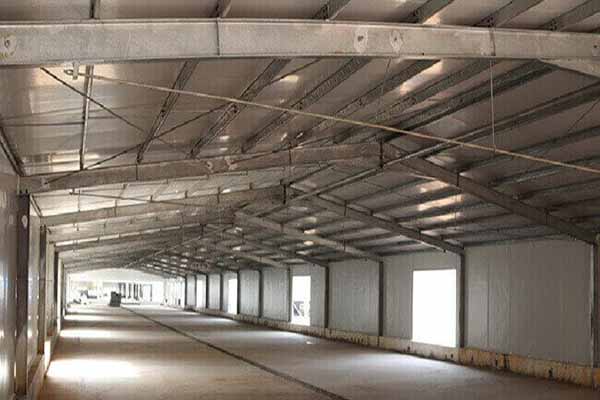Regular Inspection Items for Uganda Chicken Equipment
Time : 2025-06-27
Uganda’s poultry industry has been growing rapidly, with an increasing number of farmers relying on chicken equipment for optimal production. To ensure the equipment functions efficiently and reduces downtime, regular inspection is crucial. This article outlines the key inspection items for Uganda chicken equipment, emphasizing the importance of proactive maintenance for a profitable poultry operation.
Introduction
Proper maintenance of chicken equipment is essential in ensuring that the poultry farm operates smoothly. Regular inspections help to identify potential issues before they become major problems, reducing downtime and costly repairs. In this article, we will discuss the critical items that should be included in a comprehensive inspection of Uganda chicken equipment.
1. Feeders and Waterers
Feeder and waterer are essential components in the poultry farming process. Regular inspection items for these equipment include:
– Proper alignment: Check that feeders and waterers are correctly positioned to ensure all chickens have access to food and water.
– Cleanliness: Inspect for any buildup of feed or litter, as it can lead to diseases and reduce consumption rates.
– Flow rate: Verify that water is flowing at an appropriate rate to avoid water spillage and ensure chickens have adequate access to water.
– Replacement parts: Check for worn-out parts such as belts, chains, and springs, and replace them as needed.
2. Laying nests
Laying nests play a crucial role in egg production. Regular inspection items for these nests include:
– Proper positioning: Ensure nests are positioned in a quiet, dark corner of the hen house to encourage egg laying.
– Cleanliness: Check for any droppings or other debris that may have accumulated, and clean the nests as needed.
– Ventilation: Ensure the nests have good ventilation to prevent moisture buildup and maintain an ideal laying environment.
– Comfort: Verify that the nest materials are in good condition and comfortable for the hens to lay in.
3. Lighting systems
Proper lighting is crucial for maintaining the health and productivity of your poultry flock. Regular inspection items for lighting systems include:
– Intensity: Check that the lighting intensity is sufficient for the age and species of the chickens, as recommended by your veterinarian or poultry consultant.
– Timing: Ensure that the lighting schedule aligns with the chicken’s natural photoperiod and meets any production requirements.
– Faulty bulbs: Replace any burned-out bulbs immediately to avoid uneven lighting conditions.
– Electrical connections: Inspect the electrical connections to prevent potential hazards such as shocks or fires.
4. Fans and Cooling Systems
In regions with high temperatures, cooling systems are essential for maintaining the comfort and health of your chickens. Regular inspection items for fans and cooling systems include:
– Functionality: Verify that fans and cooling systems are working correctly and efficiently.
– Filter cleaning: Clean or replace air filters as needed to maintain air quality and prevent clogs.
– Cooling capacity: Ensure the cooling systems have the adequate capacity to keep chickens comfortable during hot weather.
– Maintenance logs: Keep records of maintenance and repair activities to ensure equipment is operating optimally.
5. Ventilation systems
Proper ventilation is crucial for controlling humidity, temperature, and air quality in the poultry house. Regular inspection items for ventilation systems include:
– Airflow: Check that the airflow is even throughout the house and meets the recommended criteria.
– Cleanliness: Inspect vents and fans for debris or buildup, and clean as necessary.
– Adjustability: Ensure that vents can be adjusted as needed to control airflow and temperature.
– Maintenance records: Keep a log of maintenance activities, including any repairs or replacements.
6. Egg handling and collection systems
Egg handling and collection systems are vital for maintaining egg quality and reducing breakage. Regular inspection items for these systems include:
– Cleanliness: Inspect egg handling equipment for any signs of contamination, such as dirt or bacteria.
– Sanitization: Ensure that all equipment is sanitized regularly to prevent the spread of diseases.
– Efficiency: Verify that the equipment is efficient and minimizes the risk of egg breakage during handling and collection.
– Replacement parts: Check for worn-out parts, such as belts, chains, and springs, and replace them as needed.
Conclusion
Regular inspection of Uganda chicken equipment is essential for maintaining an efficient, profitable poultry operation. By proactively addressing potential issues, you can prevent downtime, reduce maintenance costs, and ensure the health and well-being of your chickens. Implementing a comprehensive inspection schedule and following the recommended maintenance procedures will help you maximize your poultry farming success.












